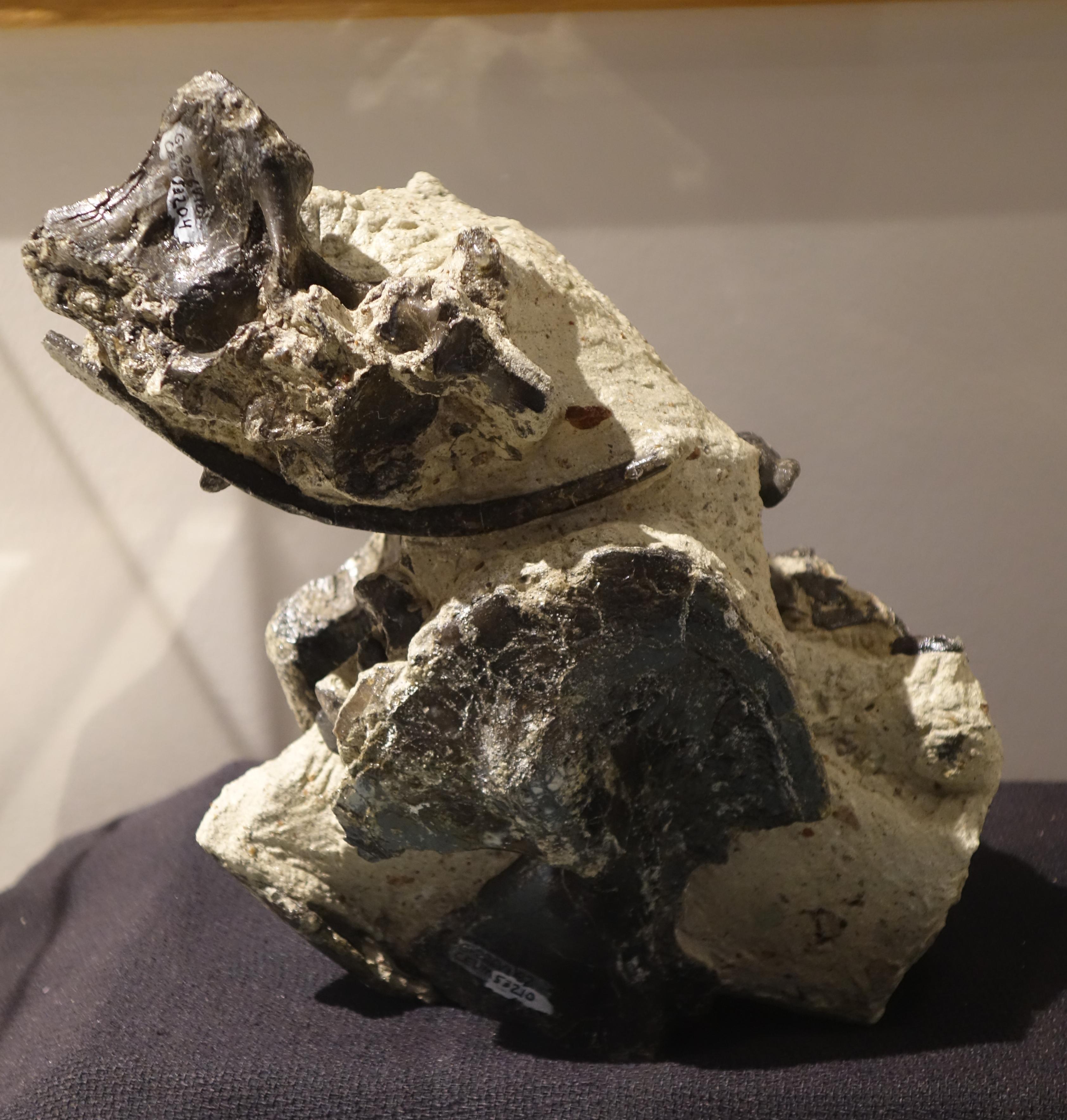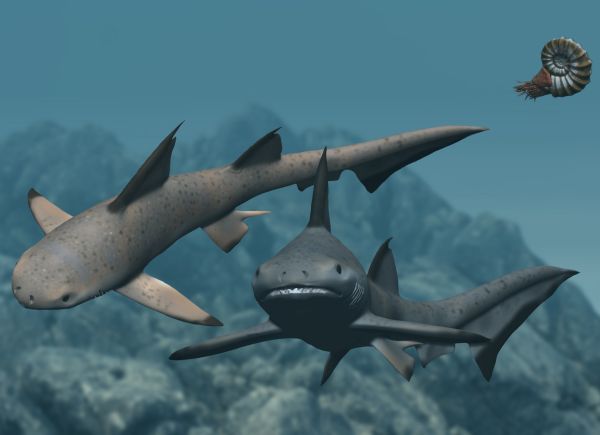|
Paralitherizinosaurus
''Paralitherizinosaurus'' is an extinct genus of therizinosaurid dinosaur from the Late Cretaceous Osoushinai Formation of Hokkaido, Japan. The genus contains a single species, ''P. japonicus'', known from a partial right hand and cervical vertebra. ''Paralitherizinosaurus'' represents the youngest therizinosaur known from Japan. Discovery and naming The ''Paralitherizinosaurus'' holotype specimen, NMV-52, was discovered in September 2000 in layers of the Osoushinai Formation (Yezo Group) in Nakagawa, Hokkaido, Japan, which dates to the early Campanian age of the late Cretaceous period. The specimen consists of a partial cervical vertebra and the metacarpal I, proximal ends of unguals I and II, and nearly complete ungual III of the right hand. Some of these remains were first described by Murakami ''et al''. in 2008 as belonging to an indeterminate genus of maniraptoran theropod, possibly with therizinosauroid affinities. In 2022, Kobayashi ''et al''. described ''Paralitheriz ... [...More Info...] [...Related Items...] OR: [Wikipedia] [Google] [Baidu] |
Paralitherizinosaurus Restoration
''Paralitherizinosaurus'' is an extinct genus of therizinosaurid dinosaur from the Late Cretaceous Osoushinai Formation of Hokkaido, Japan. The genus contains a single species, ''P. japonicus'', known from a partial right hand and cervical vertebra. ''Paralitherizinosaurus'' represents the youngest therizinosaur known from Japan. Discovery and naming The ''Paralitherizinosaurus'' holotype specimen, NMV-52, was discovered in September 2000 in layers of the Osoushinai Formation (Yezo Group) in Nakagawa, Hokkaido, Japan, which dates to the early Campanian age of the late Cretaceous period. The specimen consists of a partial cervical vertebra and the metacarpal I, proximal ends of unguals I and II, and nearly complete ungual III of the right hand. Some of these remains were first described by Murakami ''et al''. in 2008 as belonging to an indeterminate genus of maniraptoran theropod, possibly with therizinosauroid affinities. In 2022, Kobayashi ''et al''. described ''Parali ... [...More Info...] [...Related Items...] OR: [Wikipedia] [Google] [Baidu] |
Paralitherizinosaurus Holotype Block
''Paralitherizinosaurus'' is an extinct genus of therizinosaurid dinosaur from the Late Cretaceous Osoushinai Formation of Hokkaido, Japan. The genus contains a single species, ''P. japonicus'', known from a partial right hand and cervical vertebra. ''Paralitherizinosaurus'' represents the youngest therizinosaur known from Japan. Discovery and naming The ''Paralitherizinosaurus'' holotype specimen, NMV-52, was discovered in September 2000 in layers of the Osoushinai Formation (Yezo Group) in Nakagawa, Hokkaido, Japan, which dates to the early Campanian age of the late Cretaceous period. The specimen consists of a partial cervical vertebra and the metacarpal I, proximal ends of unguals I and II, and nearly complete ungual III of the right hand. Some of these remains were first described by Murakami ''et al''. in 2008 as belonging to an indeterminate genus of maniraptoran theropod, possibly with therizinosauroid affinities. In 2022, Kobayashi ''et al''. described ''Parali ... [...More Info...] [...Related Items...] OR: [Wikipedia] [Google] [Baidu] |
Yezo Group
The Yezo Group is a stratigraphic group in Hokkaido, Japan and Sakhalin, Russia which is primarily Late Cretaceous in age (Aptian to Earliest Paleocene). It is exposed as roughly north–south trending belt extending 1,500 kilometres through central Hokkaido from Urakawa to Cape Sōya and Sakhalin from the south coast to Alexandrovsk-Sakhalinsky District. It consists of marine forearc basin sediments, typically turbiditic and bioturbated mudstones and sandstones with subordinate conglomerate primarily deposited on the continental shelf and slope of the ancient Yezo subduction margin. It forms a continuous depositional sequence with the Sorachi Group, which overlies the Horokanai Ophiolite. The sequence gradually shallows upwards with the terminal Hakobuchi Formation representing a fluvial-inner shelf environment. Numerous fossils are known from the unit, mostly ammonites and bivalves, but also marine vertebrates such as mosasaurs, plesiosaurs and marine turtles. Dinosaur re ... [...More Info...] [...Related Items...] OR: [Wikipedia] [Google] [Baidu] |
2022 In Archosaur Paleontology
This article records new taxa of fossil archosaurs of every kind that are scheduled described during the year 2022, as well as other significant discoveries and events related to paleontology of archosaurs that are scheduled to occur in the year 2022. Pseudosuchians New pseudosuchian taxa General pseudosuchian research * A study on the mandible embryogenesis in extant caimans, and on its implications for the knowledge of the evolution of postdentary lower jaw of pseudosuchians, is published by Bona ''et al.'' (2022). * A study on the musculature of crocodylian and fossil suchian jaws, investigating the impact of the flattening of the skulls of suchians in their evolutionary history on their muscle anatomy, is published by Sellers ''et al.'' (2022). * Revision of ''Tsylmosuchus donensis'' and ''Scythosuchus basileus'' is published by Sennikov (2022), who interprets the latter taxon as a junior synonym of the former one, and interprets ''T. donensis'' as a likely member of ... [...More Info...] [...Related Items...] OR: [Wikipedia] [Google] [Baidu] |
Therizinosauridae
Therizinosauridae (meaning 'scythe lizards')Translated paper is a family of derived (advanced) whose fossil remains have been found in mostly boundary. Even though representative fossils have only been found throughout and |
Falcarius
''Falcarius'' (meaning "sickle cutter") is a genus of primitive therizinosaur dinosaur that lived during the Early Cretaceous period in what is now North America. Its remains were first collected in the Cedar Mountain Formation in 1999, with subsequent findings made during the 2000s. The genus is known from multiple specimens ranging from immature to fully-grown individuals. ''Falcarius'' was a long bipedal herbivore with a small head and an elongated neck and tail. Unlike advanced therizinosaurs, ''Falcarius'' had a propubic pelvis and three-toed feet with a reduced hallux (first digit). ''Falcarius'' is the basalmost known definitive therizinosaurian genus, and has been considered a transitional form connecting the typical theropod bodyplan to the unusual morphology of Therizinosauridae. Its description in 2005, following that of the basal therizinosauroid '' Beipiaosaurus'' from the Early Cretaceous of China in 1999, helped clarify the early evolution of the Therizinosauria a ... [...More Info...] [...Related Items...] OR: [Wikipedia] [Google] [Baidu] |
Genus
Genus ( plural genera ) is a taxonomic rank used in the biological classification of extant taxon, living and fossil organisms as well as Virus classification#ICTV classification, viruses. In the hierarchy of biological classification, genus comes above species and below family (taxonomy), family. In binomial nomenclature, the genus name forms the first part of the binomial species name for each species within the genus. :E.g. ''Panthera leo'' (lion) and ''Panthera onca'' (jaguar) are two species within the genus ''Panthera''. ''Panthera'' is a genus within the family Felidae. The composition of a genus is determined by taxonomy (biology), taxonomists. The standards for genus classification are not strictly codified, so different authorities often produce different classifications for genera. There are some general practices used, however, including the idea that a newly defined genus should fulfill these three criteria to be descriptively useful: # monophyly – all descendants ... [...More Info...] [...Related Items...] OR: [Wikipedia] [Google] [Baidu] |
Maniraptora
Maniraptora is a clade of coelurosaurian dinosaurs which includes the birds and the non-avian dinosaurs that were more closely related to them than to ''Ornithomimus velox''. It contains the major subgroups Avialae, Deinonychosauria, Oviraptorosauria and Therizinosauria. '' Ornitholestes'' and the Alvarezsauroidea are also often included. Together with the next closest sister group, the Ornithomimosauria, Maniraptora comprises the more inclusive clade Maniraptoriformes. Maniraptorans first appear in the fossil record during the Jurassic Period (see '' Eshanosaurus''), and survive today as living birds. Description Maniraptorans are characterized by long arms and three-fingered hands (though reduced or fused in some lineages), as well as a "half-moon shaped" (semi-lunate) bone in the wrist (carpus). In 2004, Tom Holtz and Halszka Osmólska pointed out six other maniraptoran characters relating to specific details of the skeleton. Unlike most other saurischian dinosaurs, which h ... [...More Info...] [...Related Items...] OR: [Wikipedia] [Google] [Baidu] |
Cladogram
A cladogram (from Greek ''clados'' "branch" and ''gramma'' "character") is a diagram used in cladistics to show relations among organisms. A cladogram is not, however, an evolutionary tree because it does not show how ancestors are related to descendants, nor does it show how much they have changed, so many differing evolutionary trees can be consistent with the same cladogram. A cladogram uses lines that branch off in different directions ending at a clade, a group of organisms with a last common ancestor. There are many shapes of cladograms but they all have lines that branch off from other lines. The lines can be traced back to where they branch off. These branching off points represent a hypothetical ancestor (not an actual entity) which can be inferred to exhibit the traits shared among the terminal taxa above it. This hypothetical ancestor might then provide clues about the order of evolution of various features, adaptation, and other evolutionary narratives about ance ... [...More Info...] [...Related Items...] OR: [Wikipedia] [Google] [Baidu] |
Uzbekistan
Uzbekistan (, ; uz, Ozbekiston, italic=yes / , ; russian: Узбекистан), officially the Republic of Uzbekistan ( uz, Ozbekiston Respublikasi, italic=yes / ; russian: Республика Узбекистан), is a doubly landlocked country located in Central Asia. It is surrounded by five landlocked countries: Kazakhstan to the north; Kyrgyzstan to the northeast; Tajikistan to the southeast; Afghanistan to the south; and Turkmenistan to the southwest. Its capital and largest city is Tashkent. Uzbekistan is part of the Turkic world, as well as a member of the Organization of Turkic States. The Uzbek language is the majority-spoken language in Uzbekistan, while Russian is widely spoken and understood throughout the country. Tajik is also spoken as a minority language, predominantly in Samarkand and Bukhara. Islam is the predominant religion in Uzbekistan, most Uzbeks being Sunni Muslims. The first recorded settlers in what is now Uzbekistan were Eastern Iranian no ... [...More Info...] [...Related Items...] OR: [Wikipedia] [Google] [Baidu] |
Bissekty Formation
The Bissekty Formation (sometimes referred to as Bissekt) is a geologic formation and Lagerstätte which crops out in the Kyzyl Kum desert of Uzbekistan, and dates to the Late Cretaceous Period. Laid down in the mid to late Turonian, it is dated to about 92 to 90 Ma (million years ago). Description The lithology of the sediment largely consists of cross bedded sandstones with interbeds of massive sandstone, well cemented intraformational conglomerate, siltstones and mudstones. Most of the fossils are found as clasts within the conglomerates. Fossil content The Bissekty Formation is characterised by a mix of marine, brackish, freshwater, and terrestrial animal fossils. This stands in contrast the strictly marine fossils found in the underlying Dzheirantui Formation, and indicates that the Bissekty was formed during the regression of a saltwater sea. The coastline expanded inland again in the upper portion of the Bissekty, represented by a proportional increase of fully aquat ... [...More Info...] [...Related Items...] OR: [Wikipedia] [Google] [Baidu] |
Suzhousaurus
''Suzhousaurus'' (meaning "Suzhou lizard") is a genus of large therizinosauroid dinosaur from the Early Cretaceous of China. The genus is known from two specimens discovered on the Xiagou Formation and Zhonggou Formation—which are situated in the Xinminbao Group. These findings were made during field-works in 1999 and 2004. Though ''Suzhousaurus'' is known from these two specimens, an earlier named and described therizinosauroid from the adjacent basin, ''"Nanshiungosaurus" bohlini'', may be synonymous with the former. However, ''Suzhousaurus'' can not be compared to this species due to non-overlapping material and the loss of the same. Moreover, this synonymy will result in ''Suzhousaurus bohlini'' with ''"N". bohlini'' having priority. ''Suzhousaurus'' was an unusually large Early Cretaceous therizinosauroid reaching lengths of and nearly in weight. The upper arm (humerus) was very distinct from therizinosaurids, making ''Suzhousaurus'' to be considered as a therizinosauro ... [...More Info...] [...Related Items...] OR: [Wikipedia] [Google] [Baidu] |










